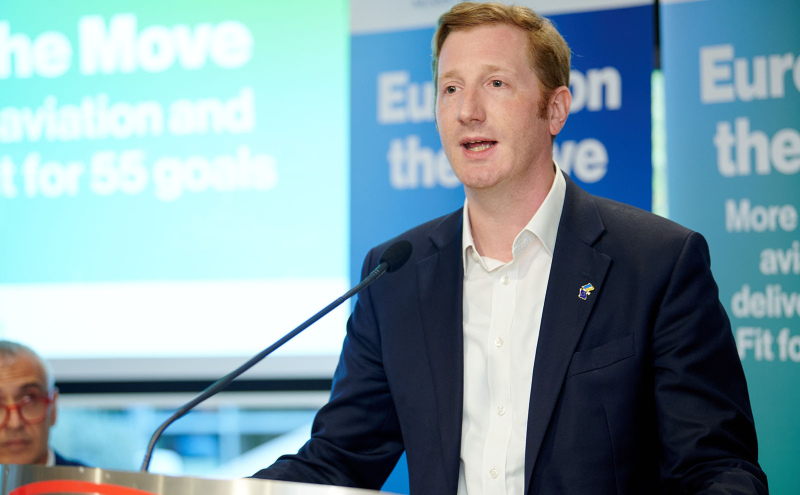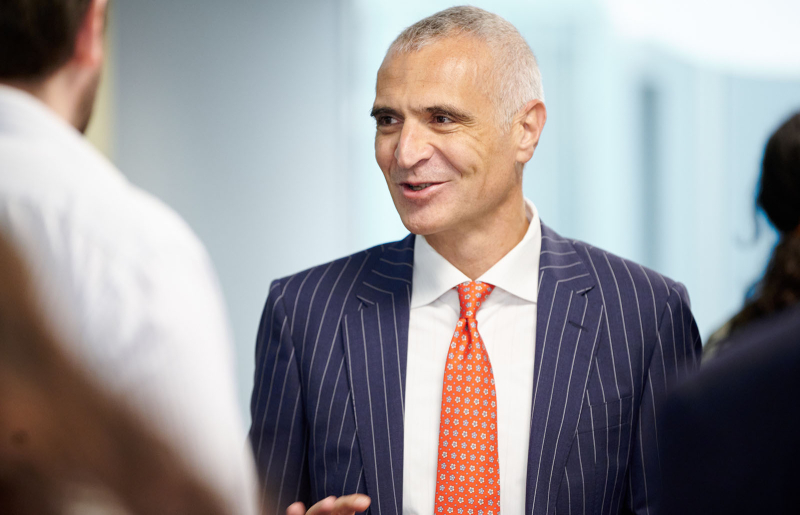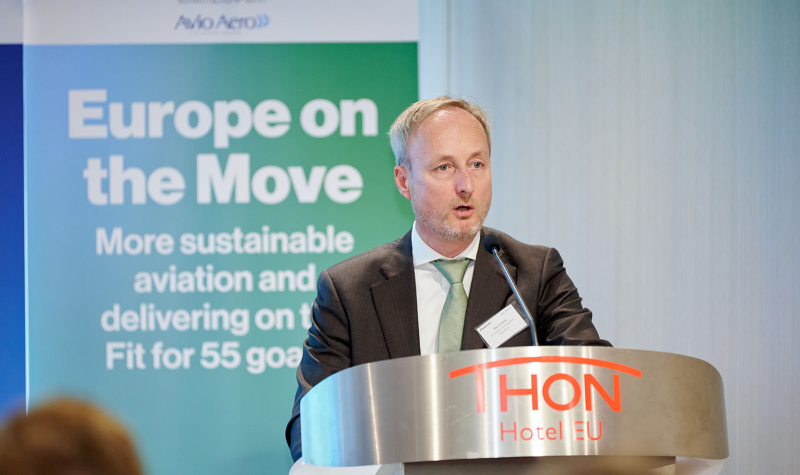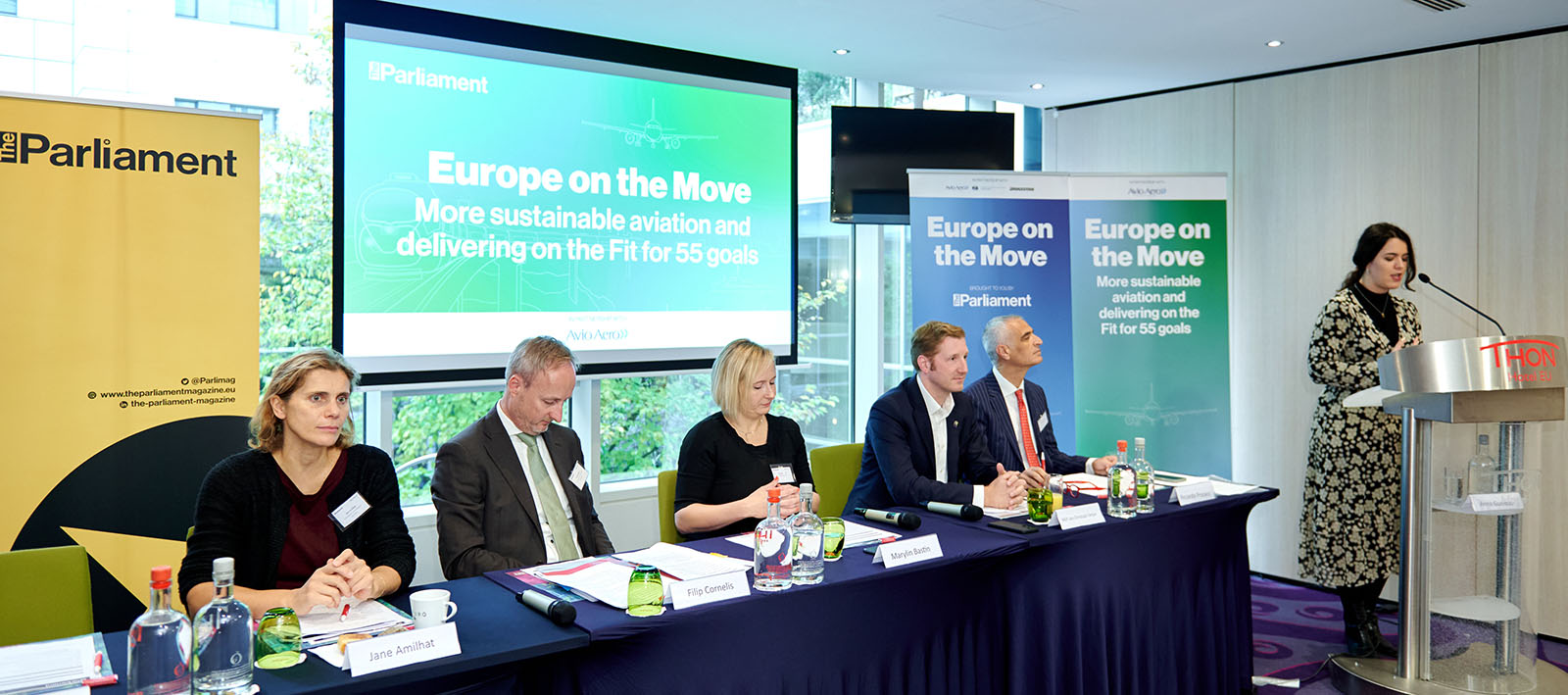Aviation
Delivering on Fit for 55 goals
Aviation industry experts and policy makers met in Brussels to discuss how commercial flights can cut CO2 emissions by 55 percent by 2030 and reach net zero by 2050.
Dec 2022
Meeting the net zero challenge is enormous. It is particularly difficult for those sectors that are currently dependent on fossil fuels and where there are few adequate or ready-to-go alternatives. Aviation is one of those sectors and over the years regulators and the private sector have been investing in cleaner solutions for flying so that it can have a more sustainable future.
At a recent International Civil Aviation Organization (ICAO) General Assembly, Member States adopted the climate goal of net zero CO2 emissions for commercial flights by 2050. In addition, the European Climate Law makes reaching the EU goal of reducing emissions by at least 55 per cent by 2030 a legal obligation.
“We want to give a signal to the industry to promote the production and use of sustainable aviation fuels, but I’m particularly concerned that we won’t create a level-playing field for European operators,” Jan-Christoph Oetjen MEP.
"We want to give a signal to the industry to promote the production and use of sustainable aviation fuels, but I’m particularly concerned that we won’t create a level-playing field for European operators"
Riccardo Procacci, the CEO of Avio Aero, part of GE Aerospace, pointed to the huge efforts made by the sector. Remarkably, technology advances have led to GE and CFM* engines today that are 40 percent more fuel-efficient than those manufactured in 1970s and 1980s. However, these undeniable improvements have been outpaced by the growth in air travel. With air travel almost back to pre-pandemic levels, Procacci says that there is no doubt that aviation has to innovate for a more sustainable future.
Revolutionising the design of engines will play a vital role, but this will not be enough in itself. Procacci points to three elements that will make a real difference: the widespread use of Sustainable Aviation Fuel (SAF), the improvement in air traffic management and the aircraft efficiency led by the development of new engine technologies, such as hybrid-electric and hydrogen propulsion.
“Multiple actors across governments and institutions around the world must work together to incentivize the transformation without punishing the industry,” said Procacci. “Policymakers need to sustain the development of technology that also stimulates the ramp up of SAF and green hydrogen.” GE and Avio Aero are leading in these developments as demonstrated by having successfully tested engines using 100 percent SAF. Nevertheless, the company continues to work on other areas, such as hydrogen combustion and the open fan architecture.
"Policymakers need to sustain the development of technology that also stimulates the ramp up of SAF and green hydrogen"
The European Commission’s Director for Aviation, Filip Cornelis, says the first important step is to fly more efficiently. In particular, the European Single Sky, which has still not been achieved, could reduce emissions by 10 percent. Optimal routing that can support the decarbonization of the aviation sector will not only require technological developments, but also cooperation between air traffic managers across the EU.
On SAF, Cornelis described a ‘chicken and egg' situation where there has historically not been sufficient supply of the alternative fuel, as there was no demand. Currently, SAF accounts for 0.05% of the overall fuel consumption in the EU: achieving a significant ramp up in a short period of time therefore represents a serious challenge. The Refuel EU Regulation will try to trigger a fundamental shift by creating a sufficiently strong demand signal that is meant to provide industry with the necessary long-term investment certainty. Once adopted, ReFuel EU will be the EU’s primary instrument for increasing the use of SAF in Europe.
Marylin Bastin, Head of Aviation Sustainability at EUROCONTROL said that their report, “Objective Skygreen 2022-2030”, provides an in-depth assessment on what cutting emissions by 55 percent in 2030 would practically mean for aviation and does this based on three traffic scenarios. Counterintuitively, the high scenario, with the most air traffic by 2030, would be the most efficient in reaching net zero emissions by 2050 at the lowest cost. This is driven by higher revenues that allow airlines to increase investments in new technologies. Cornelis agreed that when airlines were recovering they were able to invest in better and more sustainable planes.
"Currently, SAF accounts for 0.05% of the overall fuel consumption in the EU, achieving a significant ramp up in a short period of time therefore represents a serious challenge"
Jane Amilhat, Head of Unit for Low Emission Future Industries in DG Research and Innovation (DG RTD) is looking towards hydrogen and hybrid-electric among other options to encourage planes to adopt newer and cleaner technologies. With all energy sources, especially SAF, but also hydrogen and electricity, still being on the table. One major concern, however, will be to ensure that these alternative fuel sources are also sustainable.
“Air space users are under pressure from legislators and consumers to become more sustainable,” said Thomas Reynaert, Managing Director, Airlines for Europe (A4E). For airlines, one of the solutions to achieve this is to scale up their use of SAF, however availability remains a critical bottle-neck. Reynaert says that airlines need to think in the immediate and then also towards longer term technology developments when considering their decarbonization strategies. But airlines are not the only ones needing to drive action, with the improvement of air traffic control and the finalization of the Single European Sky promising immediate emission reductions.
None of the speakers underestimated the scale of the challenge, but Reynaert urged decision-makers that social and economic sustainability must be part of the transition.
*CFM International is a 50/50 joint company between GE and Safran Aircraft Engines.
The original version of this article is by the EU Parliament magazine.








